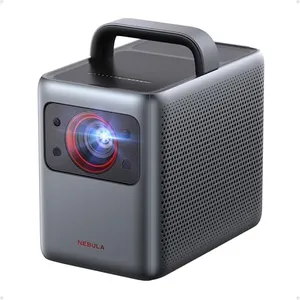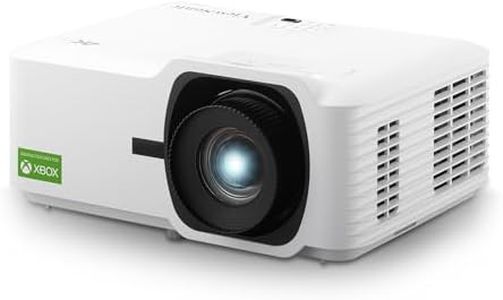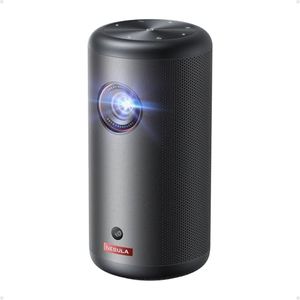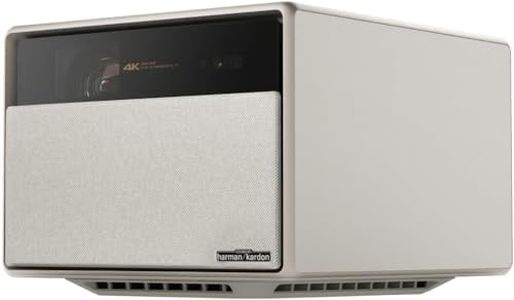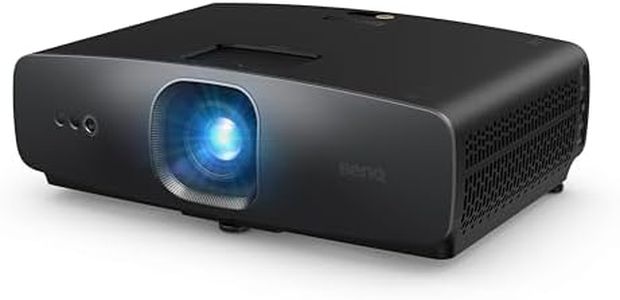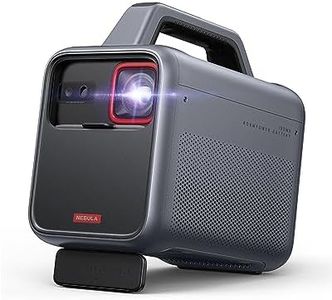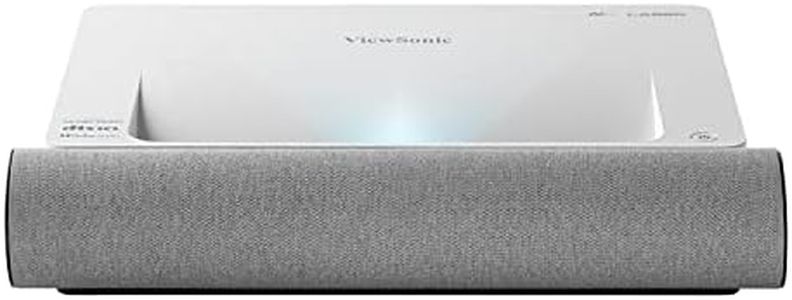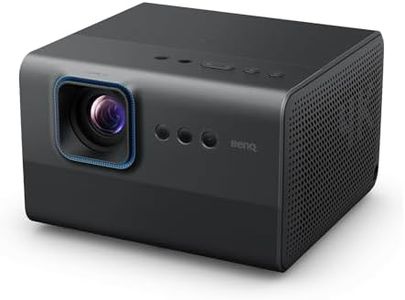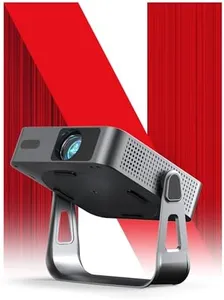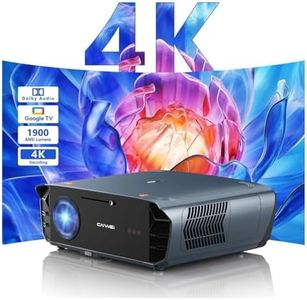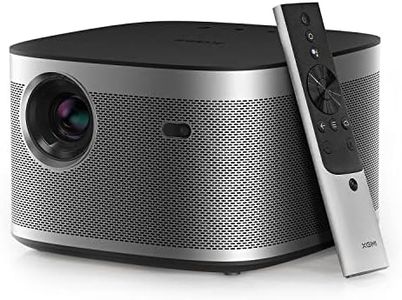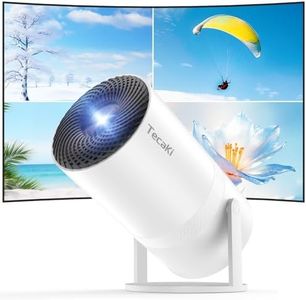We Use CookiesWe use cookies to enhance the security, performance,
functionality and for analytical and promotional activities. By continuing to browse this site you
are agreeing to our privacy policy
10 Best Projectors For Home Theaters
From leading brands and best sellers available on the web.Buying Guide for the Best Projectors For Home Theaters
Choosing a projector for your home theater is an exciting process that can greatly enhance your movie nights and gaming sessions. The right projector will depend on your room size, lighting conditions, and what you plan to watch. Before buying, consider where you'll place the projector, how far you'll be sitting from the screen, and how you want to use it most of the time. Think about whether you have a dedicated dark room or if ambient light will be present, as this influences the specs you need. Understanding the key features will help you make an informed decision and enjoy a cinema-like experience at home.Brightness (Lumens)Brightness tells you how much light the projector puts out and is measured in lumens. This is important because it affects how well you can see the image, especially if your room is not completely dark. Projectors with low lumens (under 2000) work best in completely dark rooms, while medium brightness (2000-3000 lumens) can handle some ambient light, such as in rooms with dimmed lighting. High brightness (over 3000 lumens) is suitable if you can't control the lighting well and will use the projector in a brighter space. For home theater use in a dedicated dark room, you usually don't need a very high lumen projector; something in the 1500-2500 lumen range can be ideal, helping you achieve deep blacks and vibrant colors without washing out the image.
ResolutionResolution refers to the number of pixels that make up the image on the screen. Higher resolution means a clearer and more detailed picture. Common resolutions include HD (1280x720), Full HD (1920x1080), and 4K (3840x2160). For movies and gaming, Full HD offers sharp visuals and is a good standard for most home theaters. If you want the best image quality and have access to 4K content, a 4K projector will deliver even more detail and make a bigger difference if you have a large screen or sit close to it. Consider what devices and content you’ll watch: if you mainly use streaming services with HD or 4K, pick a projector that matches your needs.
Contrast RatioContrast ratio measures how well the projector shows the difference between the darkest blacks and the brightest whites. A high contrast ratio means deeper blacks, more detail in shadows, and an overall more vivid image. Home theater enthusiasts often look for projectors with high contrast ratios (such as 10,000:1 or higher), especially in dark rooms, because this makes movies look more cinematic. If you mostly watch content in the dark, focus more on contrast; if there’s always some light in your room, contrast ratio becomes slightly less critical since a washed-out image can result from ambient light.
Throw Distance and Screen SizeThrow distance is how far the projector needs to be from the screen to produce a certain image size. It's important because not all homes have the space to place a projector far away. Short throw projectors can give you a big image even when close to the wall, while standard throw projectors need more distance. Check your room size and where you plan to install the projector, then review the manufacturer’s recommendations for how big the image will be at various distances. Choose a projector that can fill your screen at the place you want to set it up without distortion or loss of quality.
Input ConnectionsThe input connections are the ports the projector has for plugging in devices such as streaming sticks, game consoles, or Blu-ray players. HDMI is the most common and important input, but you may also want USB, VGA, audio out, or other connections based on what gadgets you use. Ensure the projector has enough of the right ports for your sources so you’re not constantly swapping cables or needing extra adapters. Think about the devices you’ll use the most, and pick a projector that directly accommodates them for simpler, trouble-free setup.
Lamp LifeLamp life tells you how long the projector’s main light source is expected to last before dimming or needing replacement. It’s measured in hours and can range from 2,000 up to 20,000 or even more for laser or LED models. If you use the projector often or want low maintenance, a longer lamp life is valuable. Casual viewers may not need extremely long lamp life, but if your projector will be running frequently, or you wish to avoid the hassle and cost of replacing bulbs, look for a model with a longer rating.
Built-in AudioMany projectors come with built-in speakers, but these are usually basic and not suited for a true home theater experience. If you don’t want to set up separate sound equipment, look for projectors with enhanced audio features, but remember that an external soundbar or surround system will always sound better. Decide how important sound quality is for your setup; if you already have speakers, built-in audio is less critical, but if you need an all-in-one solution, pay attention to the projector’s audio capabilities.

